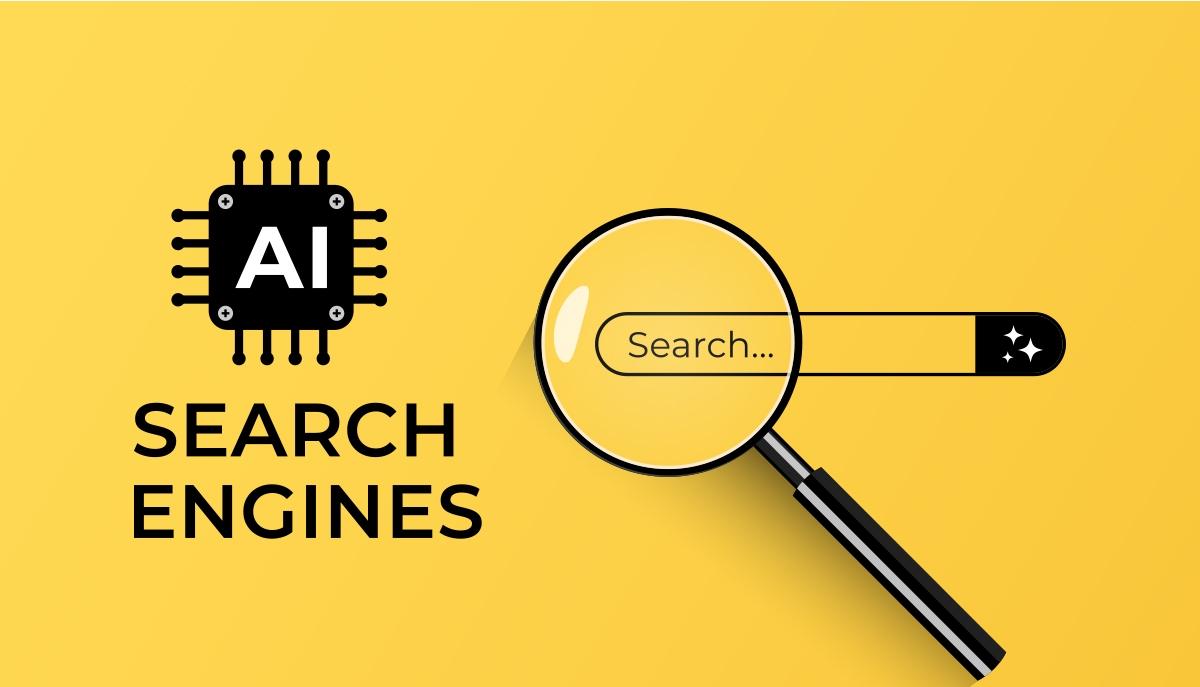AI Crawlers vs Search Crawlers

- Jul 4, 2025 modified: Nov, 07 2025
AI Crawlers vs Search Crawlers
The New SEO: Optimizing Your Website for AI Crawlers, Not Just Google
When you publish a website, you're not just writing for human visitors.
Behind the scenes, automated bots (also known as web crawlers) are constantly visiting your pages to scan, analyze, and index your content. This process is called bot crawling, and it's been the backbone of how search engines like Google and Bing organize the web for decades.
In recent years, a new type of bot has emerged: AI crawlers.
Unlike traditional search engine bots that index content to match search queries, AI crawlers gather web data to feed large language models (LLMs) like OpenAI's ChatGPT, Google Gemini, or Anthropic's Claude. These bots don't rank your site, but rather, they try to understand it.
This shift is transforming how content is discovered and reused across the internet. You might have optimized your website for Googlebot, but what about for GPTBot?
Now that AI-driven search and content generation have become more mainstream, it's time to ask the question: Is your website optimized not just for search engines, but also for AI?
Search Crawlers vs. AI Crawlers: What's the Difference?
It's important to know how traditional search engine crawlers and AI crawlers differ to understand how to optimize your website for AI.
Search Engine Crawlers (e.g. Googlebot, Bingbot)
Search engine bots are designed to index your website and serve it to users based on keyword relevance, backlinks, and ranking algorithms. They have evolved to become quite sophisticated:
- JavaScript Rendering: These crawlers can execute JavaScript, which allows them to "see" interactive or dynamically loaded content like a browser would.
- Crawl Scheduling: They visit sites frequently, prioritizing fresh content or high-performing pages.
- Mobile-First Indexing: Views sites the way a mobile user would, ensuring a consistent experience across devices.
- Indexing Goals: Their goal is to organize content for search rankings and improve user experience on search engine results pages (SERPs).
AI Crawlers (e.g. GPTbot, Common Crawl, ClaudeBot)
AI Crawlers, on the other hand, serve a whole different purpose: they gather information to train or update language models that generate human-like responses or summaries.
- No Javascript Execution (in most cases): Most access raw HTML only. If your content is heavily reliant on JavaScript, they may miss a big portion of your site.
- Snapshop Crawling: AI bots don't crawl deeply. They may visit the website just once, depending on crawl permissions and their dataset refresh schedule.
- Goal is Comprehension, Not Ranking: These bots aren't evaluated for SEO, they are extracting content to learn from or serve in AI-generated answers.
In short: your website could look great to Google, but be a blank page to GPTBot. And as AI becomes a new gateway to information, that difference can have real consequences for visibility, reach, and authority online.
How Bots Crawl Websites
At its core, crawling is the process by which automated bots systematically browse the web to discover and collect information from websites. While the concept is the same across all types of bots, how they crawl and what they collect differs significantly depending on the bot's purpose.
1. URL Discovery
Bots start by finding URLs to crawl. They might do these things:
- Start with known URLs, such as homepages.
- Follow links from other sites like backlinks.
- Use XML sitemaps submitted by website owners.
- Crawl internal links on a page to discover new ones.
Search bots such as Googlebot - Crawling are highly sophisticated during this stage as they are constantly finding new pages.
2. Fetching the Page
Once a URL is found, the bot requests the page from the server just like a browser would.
- Googlebot can send a "headless browser" to fetch, render, and interact with the page.
- AI bots usually fetch the raw HTML only, without running any scripts or waiting for content to load dynamically.
This is where JavaScript-heavy websites run into problems. If your content relies on client-side scripts to load, AI bots may not see anything at all.
3. Parsing the Content
Bots then parse the HTML to understand:
- The structure of the page (headers, body, links)
- Text content
- Metadata like

Some bots can extract structured data for indexing or training. Others are limited to what they can read directly from the DOM.
4. Respecting the Crawl Rules
Bots check two things before crawling:
- robots.txt: A file that tells bots which pages they can or can't access.
- Meta directives: Like
 .
.
Search engine bots like Googlebot closely follow these rules. AI crawlers vary in how strictly they comply.
5. Purpose-Driven Behavior
Here is where their goals diverge:
| Bot Type | Goal | Crawl Behavior |
|---|---|---|
| Search bots | Index pages for search rankings | Crawl frequently, follow links |
| AI bots | Train models or summarize content | Crawl infrequently, extract plain text |
This means your site might be thoroughly indexed by Googlebot, but only partially—or incorrectly—understood by an AI crawler.
Why JavaScript Execution Matters
Modern websites often rely heavily on JavaScript (JS) to deliver dynamic, interactive content. This means that much of what a user sees on the screen isn't part of the original HTML, it's generated after the page loads, via scripts running in the browser.
For human visitors and advanced search engine bots, this usually isn't a problem. But for many AI crawlers, it creates a blind spot.
To break it down:
- Static HTML: Content is present in the raw HTML when the page is first loaded. Easy for all bots to crawl.
- JavaScript-rendered content: Text, links, and media only appear after JavaScript runs in the browser. Many AI bots never execute these scripts, so they miss the content entirely.
The Problem: AI Bots Don't Typically Run JavaScript
Unlike Googlebot or Bingbot, most AI crawlers:
- Do not execute JavaScript
- Do not wait for page scripts to finish rendering
- Do not interact with single-page apps (SPAs) or dynamic components
This means key content such as:
- Product descriptions
- Blog posts loaded with infinite scroll
- Navigation menus built with JS frameworks
- Customer reviews pulled from APIs
... can be invisible to the AI crawling your site.
Developers love using JavaScript - it can make webpages very App like. But this advanced functionality and even text is going to be invisible to some AI crawlers.
Why Optimizing for AI Crawlers Now Matters
In the past, SEO success was defined by how well your content ranked on Google. But today, users are increasingly getting answers from AI assistants and not just search engines.
Tools such as ChatGPT, Google Gemini, and Bing AI are changing how people access information. In these platforms, your content may never be clicked but it may be quotes, summarized, or completely missed, depending on how AI bots crawl your website.
This shift in how content is consumed introduces a new layer of visibility, one that traditional SEO doesn't fully account for.
AI Bots Are Now the First Reader
Large language models (LLMs) don't rely on links or keywords the same way search engines do. Instead, they do this:
- Scan and process content to learn language patterns, facts, and context.
- Summarize information in real-time for user queries.
- Pull snippets or paraphrase from crawled pages when responding.
If your site is invisible to these bots, it's not just missing out on SEO - it's missing from the conversation entirely.
What Happens If AI Can't See Your Content?
- You lose brand visibility in AI-generated summaries or recommendations.
- Outdated or incorrect data might appear in AI responses if your site hasn't been crawled correctly.
- Your competitors might be cited instead, even if your content is more accurate or helpful.
In a world where AI tools act as front doors to the internet, optimizing for them is essential.
Early Movers Have the Advantage
Just as websites that adopted SEO early dominated SERPs for years, those who optimize now for AI visibility have a chance to shape how their brand and content are represented in AI-driven interfaces.
Think of it as the next evolution of SEO. This is no longer just about ranking well, but about being understood and accurately represented in the age of AI.
Embracing the Next Frontier of SEO
The way we build and optimize websites is evolving. It's no longer just about ranking on Google: it's about being seen, understood, and cited by AI.
AI crawlers are already shaping how your content is used in tools like ChatGPT and other AI assistants. But if your site relies too heavily on JavaScript, or if your content isn't easily accessible in plain HTML, you may be invisible to the bots that power tomorrow's answers.
The New SEO means thinking beyond keywords and backlinks. It means building websites that are machine-readable by default, ensuring your content is accessible to both traditional search engines and AI-powered systems.
Your content deserves to be part of the conversation. Make sure the machines can see it.
What if you want to block Ai Crawlers
ABC have an article on blocking Ai from training on your content. There are various reasons why you may want to do so. The way Ai can scrape copyrighted content will leave some poorer for it. Is this Ai era going to leave people reluctant to publish information on the web?
Search News Articles...
Recent Articles

Unique Web Systems Matter in a World of Sameness
- Dec 26 2025
- /
- 41

Most AI Websites Fail to Rank
- Nov 18 2025
- /
- 267

Sitemap.xml Best Practices
- Oct 14 2025
- /
- 974

Fake Reviews on Google My Business
- Oct 07 2025
- /
- 485

Sending Emails from Code
- Sep 17 2025
- /
- 579

US Tariff Shifts Undermining eCommerce
- Sep 05 2025
- /
- 710

Small Business Success Formula
- Aug 23 2025
- /
- 543

Do Strong CTAs Help or Hurt Your Website?
- Jul 31 2025
- /
- 738

AI Crawlers vs Search Crawlers
- Jul 04 2025
- /
- 945

AI vs. Human Writing - How to detect Ai
- Jun 26 2025
- /
- 1328
View All News Articles
Categories
A Gold Coast SEO and Web Developer